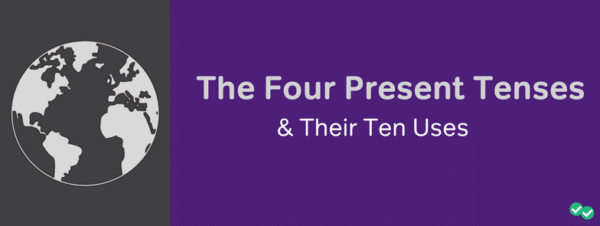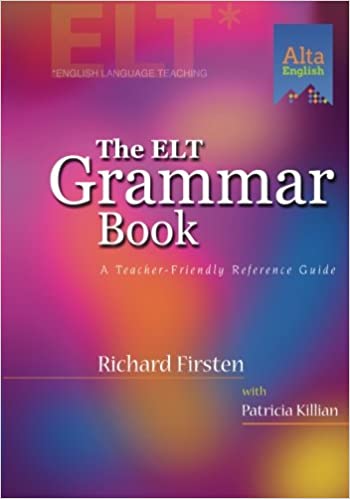Many philosophers and motivational speakers talk about the importance of living in the present. A lot of people would agree. However, when I hear this, all I can think is “which present”? As many English teachers and English students know, there are many different ways to describe the present.
In English, there are four present tenses: simple present, present perfect, present continuous, and present perfect continuous. These four tenses have a total of 10 different uses. In this post, we’ll look at the form and uses of each tense.

Simple Present
Form: Use the base form of a verb, adding an /s/ to the end of the verb if the subject is singular. (Unless the verb is irregular, in which case other rules may apply.)
Uses:
- Use 1: Actions that are habitual or routine
EXAMPLES: The sun rises. I brush my teeth twice a day.
- Use 2: General, timeless facts
EXAMPLES: Spiders make webs. Babies drink milk.
- Use 3: Narrative style (used when recalling past events or announcing things that are happening in the moment)
EXAMPLES: So I go to the store yesterday, and the clerk says “We’re closed!” He hits the baseball out of the field and makes a home run!
- Use 4: The “real” present (things that are happening right now), but ONLY when the verb is stative. Stative verbs* deal with the way the subject is, instead of what the subject does.
EXAMPLES: That car looks old. They think that’s a bad idea.
*Learn more about stative verbs.
Present Perfect
Form: Have or has + past form of a verb
Uses:
- Use 1: Actions that started in the past, continue into the present, and may continue into the future
EXAMPLES: The children have felt sick ever since they ate lunch. My neighbor has lived next door to me for two years.
- Use 2: Separate actions that happened in the past and may happen again in the
future
EXAMPLES: That man has traveled overseas several times. We have eaten at that restaurant once or twice. - Use 3: Recently completed actions that still influence things happening in the present
EXAMPLES: The sun has risen and you need to wake up. They have finished their meeting, so now they can go.
Present Continuous
Form: The present tense of “to be” (am/is/are)+ verb + ing
Uses:
- Use 1: The “real” present (things that are happening right now), for all verbs except stative verbs
EXAMPLES: I am sitting down right now. He can’t come to the phone because he is working. You can’t see the children because they are hiding.
- Use 2: Temporary actions that may not be happening right now, but have not yet been completed
EXAMPLES: I am taking an English course. The truck is being repaired. Plans are being made.
Present Perfect Continuous
Form: Have or has + been + verb + ing
Uses:
- Use 1: Actions that started in the past, continue into the present, and may continue into the future (note that this is the exact same use and meaning as Use 1 of present perfect)
EXAMPLES: The children have been feeling sick ever since they ate lunch. My neighbor has been living next door to me for two years.
What a long and winding road! As important as it is to live in the present, it’s hard to know exactly which present you live in, isn’t it? You may want to use this blog post for reference as you practice your TOEFL grammar. On the other hand, if you would like to commit these tenses and uses to memory, you may use The Four Present Tenses and their Ten Uses Worksheet to practice and learn them.
Want even more TOEFL practice? Try out our FREE Practice Test PDF:
If you’re looking for even more grammar practice, check out the Magoosh TOEFL free trial (no credit card required) for video lessons and more!
Happy studying!






Leave a Reply